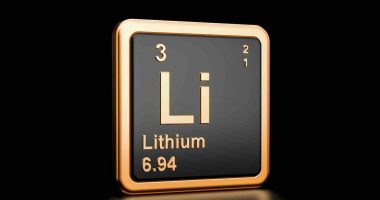- Ionic Rare Earths (IXR) has yielded positive results from its recently completed metallurgical testing of samples from the Makuutu Eastern Zone
- The Makuutu Eastern Zone makes up part of the broader Makuutu Rare Earths Project in Uganda
- Positively, improving extraction methods led to an increase in rare earth oxide extraction of 34 per cent total rare earth oxide-cerium (TREO-Ce)
- Based on its findings, Ionic plans to conduct larger-scale tests while simultaneously progressing its drilling program at the Makuutu Project
- Company shares closed 11.1 per cent in the green to trade for 1 cent
Ionic Rare Earths (IXR) has completed initial metallurgical testing samples collected from the Makuutu Eastern Zone.
The Makuutu Eastern Zone makes up part of the broader Makuutu Rare Earths Project in Uganda. This zone is located just six kilometres east of the nearest metallurgical test sample from the Makuutu Central Zone.
The latest test work follows the optimisation program conducted at the Makuutu Central Zone in May. Previously conducted metallurgical test work resulted in a 700 per cent increase in rare earth element (REE) recovery in some of the lower recovery areas.
Importantly, recovery of the high-value critical rare earth elements (CREE) and heavy rare earth elements (HREE) continues to be favoured over light rare earth elements (LREE).
The average TREE-Ce recovery of the samples is 20 per cent at pH 3.5 and 41 per cent at pH one. This represents an average increase of 21 per cent. The corresponding average recovery of the HREOs is 22 per cent at pH 3.5 and 52 per cent at pH one.
Positively, an improvement in extraction methods was achieved when revised test conditions saw a substantive increase in rare earth oxide extraction of 34 per cent TREO-Ce. To achieve this, the company decreased the pH level from 3.5 to one.
Furthermore, scandium extraction has increased up to roughly 30 per cent with the pH level at one.
“Most significantly, these initial results indicate we can expect such recoveries – which are in-line with other globally significant Rare Earths projects – throughout the greater Makuutu project area,” CEO Tim Harrison said.
Outlook
The company expects to undertake larger-scale tests as they’re likely to reduce reagent consumption and pH conditions over a longer amount of time.
Reagents is a substance which is added to a system to cause a chemical reaction or added to test if a reaction occurs.
So far, test work conditions suggest a static leach arrangement could be used on the Makuutu project using a lixiviant blend of ammonium sulphate and sulfuric acid.
Ionic assures reagents are ready to go with a large sulfuric acid plant in Tororo, Uganda.
Ionic Rare Earths recently began a 3700-metre drilling program at the Makuutu Rare Earths Project as part of its aim to progress the project towards commercial development.
Company shares closed 11.1 per cent in the green to trade for 1 cent each.






